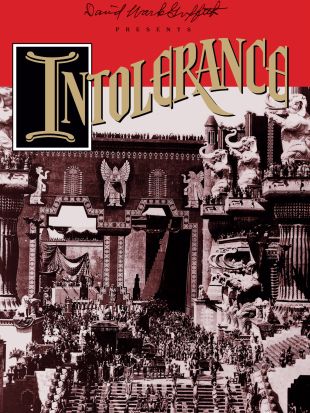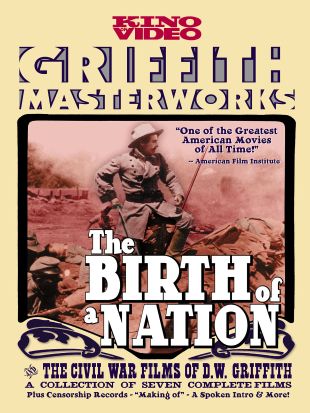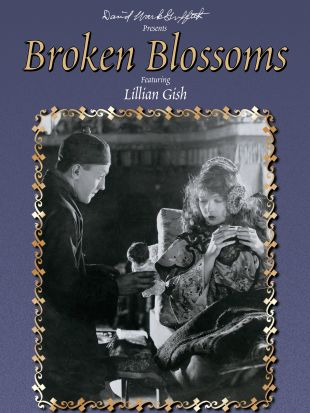One of the pioneers of contemporary filmmaking (and often cited as the single most important figure in the history of American cinema), D.W. Griffith was also one of the most controversial figures in the history of Hollywood. The son of a physician and Confederate hero during the Civil War, Griffith grew up in poverty in Louisville, KY, and gravitated to acting at an early age. At the turn-of-the-century, he worked as a performer in various touring companies with mixed success and in virtual poverty. After years of frustration on the stage, he turned to movies, and became an actor and writer, establishing himself at New York's Biograph Studio. He eventually became a producer and, in 1908, a director. He directed every Biograph release through the end of 1909, and, later as chief of production, supervised the making of every film released by the company for the next three years, personally directing all of the major productions. Most of these 450 films were comedies, although a significant minority were dramas. But it was in 1913 that Griffith's ambitions became clear with Judith of Bethulia; violating the restrictions of the studio heads, Griffith made the Old Testament drama into a four-reel film, almost double the length that had been approved, and an epic by the of the film standards of the day.
After leaving Biograph, Griffith embarked on an ambitious production based upon Thomas Dixon's novel The Clansman, which ultimately became known as Birth of a Nation (1915). The first great epic film of American cinema, this movie, more than any other, defined what the medium could do. Assisted by his cameraman Billy Bitzer, Griffith had already utilized such techniques of film construction and design as the close-up, rhythmic editing, parallel action, and dramatic lighting; these had been used before -- but not with Griffith's coherence or purpose. Birth of a Nation was the culmination of his efforts, drawing these techniques together in an epic-length story that carried viewers through the Civil War and into Reconstruction, with in-depth, detailed drama involving dozens of characters. Griffith single-handedly elevated American film -- which had previously stood in the shadow of its European cousins (Italian filmmakers, in particular, had been more ambitious much earlier) to world-class stature, and forced Americans who had thought of movies as light entertainment to perceive them as serious creations, worthy of respect equal to the greatest stage dramas and capable of creating theatrics that the a live performance couldn't hope to match. The movie's Civil War setting, however, was to prove a blemish on Griffith's reputation -- a Southerner by birth and family history with a deep resentment of the toll that Reconstruction played on his homeland, Griffith was outspoken on his views regarding the races, and black audience members all over the country rose up in protest against the depiction of slaves and ex-slaves in the movie. Demonstrations began almost from the instant the film was released, and Griffith -- despite including a plea for reconciliation of all of mankind's differences in his subsequent film Intolerance (1916) -- never fully recovered from the controversy. (A film answering Birth of a Nation was produced in 1919; entitled Birth of a Race, it presented a completely different view of black Americans and their ancestors.) The ripple effect of Birth also moved in other directions: The news that Griffith was doing an eight-reel drama also led his former mentor, Mack Sennett, to make the hour-long Tillie's Punctured Romance, the first comedy to run longer than two reels.
Griffith never had another success as great as Birth of a Nation, and, indeed, faced ongoing financial problems for much of the rest of his career. In addition, while his filmmaking technique was beyond reproach, his dramatic sensibilities were rooted in the touring theater of the 20th century's first decade. While he expanded the structural boundaries and storytelling capability of film with Intolerance -- the parallel action of which took place across several time periods -- and ventured into topical filmmaking with a vengeance in the World War I story Hearts of the World (1918), his characters and dramas seemed dated and one-dimensional. His smaller scale productions, such as True Heart Susie (1925) and Broken Blossoms (1919), worked better and have endured, but Griffith fell increasingly behind the rest of the country and the filmmaking community in the kinds of stories he told. He co-founded United Artists with Mary Pickford, Douglas Fairbanks Sr., and Charles Chaplin, but his involvement with the new studio failed to give him the financial independence that he needed to sustain his productions. His career began a downward spiral in the early '20s, despite such major works as the livelyAmerica, an account of the Revolutionary War, and Isn't Life Wonderful?, a compassionate look at post-war Germany. Almost all were box-office failures, costing Griffith creative control over his films. Other than his comedies with W.C. Fields, Sally of the Sawdust and That Royale Girl, his last silents were trivial, impersonal dramas. He made only two sound films: the biopic Abraham Lincoln, distinguished by Walter Huston's acting and Griffith's ease with sound, and The Struggle, a sensitive but neglected drama of alcoholism. Their failure sealed his fate, and he never got another job. Griffith died largely forgotten at age 73 in 1948; the legacy he left was an art form called cinema.


